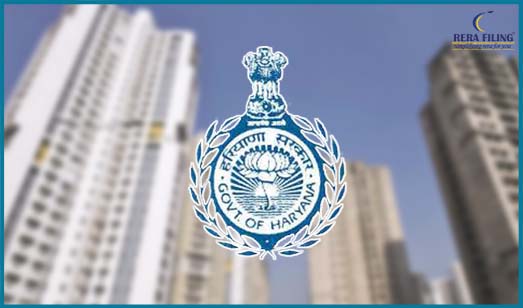Infrastructure Augmentation Charges in Haryana

- General
- Author: Shreya Uppal
Highlights
The floor area ratio (FAR) of a project is an important indicator of the density of the project and how much a home would cost.
FAR denotes the maximum floor space that can be constructed on a given piece of land. It is a ratio between the total floor area of the building divided by the area of land on which project is being constructed
. A low-FAR project usually means shorter buildings, lesser population density and more open areas around the project and moreover a low-FAR project has more resale value of property than a high-FAR project.
Why Augmentation Charges are levied?
The floor area ratio (FAR) of a project is an important indicator of the density of the project and how much a home would cost. FAR denotes the maximum floor space that can be constructed on a given piece of land. It is a ratio between the total floor area of the building divided by the area of land on which project is being constructed. It is decided by the municipal authorities to ensure the best possible conditions for residents in that area keeping in mind the density of the population, availability of open spaces, etc.
The more floor area available to a developer, the taller the building can be. With an intention to provide best-shared amenities to the living residents the Government has decided the FAR of a particular locality. A low-FAR project usually means shorter buildings, lesser population density and more open areas around the project and moreover, a low-FAR project has a more resale value of the property than a high-FAR project.
A FAR violation by some developers came into light due to which the Haryana Government has decided to levy Infrastructure Augmentation Charges (IAC). IAC is basically money charged from a developer for additional FAR used in relation to the granted one.
The general dictionary meaning of augmentation can be defined as the action or process of becoming greater in size than the original amount. Therefore for higher FAR than granted one the Government is levying IAC.
As per the Rule-16 of the Haryana Development and Regulations of Urban Area Rules, 1976 as amended by the Haryana Development and Regulation of Urban Areas (Amendment) Rules, 2011 the rate of infrastructure augmentation charges has been defined in Schedule-B. As per this rule, any colonizer or developer to whom a license has been granted to convert the land into a colony shall be liable to pay infrastructure augmentation charges in lieu of using high-FAR than granted in order to get a Completion Certificate for his project. An application shall be made to the Director in Form LC-VIII along with a demand draft on account of Infrastructure Augmentation Charges.
Rates of Infrastructure Augmentation Charges as per Schedule-B
(All figures are in Rs. Lakhs per acre)
|
Urban Areas Classification |
Hyper Potential Zone |
High-I Potential Zone |
High-II Potential Zone |
Medium Potential Zone |
Low Potential Zone |
|
Category of Uses |
|
|
|
|
|
|
Residential (Plotted) |
5 |
3 |
3 |
1.5 |
0.5 |
|
Residential (Group Housing) |
10 |
6 |
6 |
3 |
1 |
|
Commercial |
20 |
12 |
12 |
6 |
2 |
|
Industrial/IT |
15 |
9 |
9 |
4.5 |
1.5 |
Exemption from the payment of Infrastructure Augmentation Charges
Rule 16A of the Haryana Development and Regulation of Urban Areas (Amendment) Rules, 2011, offers the benefit of exemption to the colonizer. It states that any coloniser seeking exemption from the payment of such Infrastructure Augmentation Charges, shall submit a certificate regarding having restricted its profit-margin to fifteen percent from the licence project, in accordance with such condition imposed in the bilateral agreement at the time of grant of licence, along with all necessary documents e.g., audited book of accounts for the project, a certificate to this effect from a Chartered Accountant, etc. to the satisfaction of the Director.
The Director shall consider all such requests based on their individual merits and shall decide to conduct an independent audit of books of accounts by an independent agency of its choice. After satisfying itself about the merits of the case, the Director shall decide as to the grant of such exemption from the payment of Infrastructure Augmentation Charges or refuse to issue such exemption, by means of a speaking order, after affording the applicant an opportunity of being heard.
For consultancy related to these matters, Contact Us.
Latest Blogs
- Rights of buyer under RERA
- Delhi RERA Agent Procedure for Re-validation or Renewal
- MahaRERA guidelines for Real Estate agent training and certification
- Force Majure Clause in RERA
- All you need to know about Relinquishment Deed
- RERA Agent Renewal in Maharashtra
- What is Title Verification and Search Report?
- Revocation under the RERA Act
- RERA Limitations
- Homebuyers right in case of insolvency
Copyright © 2023 RERA Filing. All rights reserved.
 Rera
Act
Rera
Act
 Maharashtra
Maharashtra Karnataka
Karnataka Andhra Pradesh
Andhra Pradesh Uttar Pradesh
Uttar Pradesh